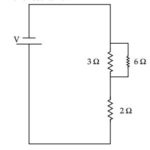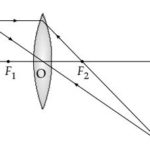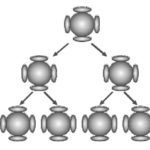Page 200 Question 1. What does an electric circuit mean? Answer 1 An electric circuit is the pathway in which current can flow. It consists of electric devices, switching devices, source of electricity, etc. that are connected by conducting wires. Question 2. Define the unit of current. Answer 2 The unit of electric current is ampere (A). When 1 C of charge flows … [Read more...] about Chapter 12 Electricity
Science
Chapter 10 Light Reflection and Refraction
Page 168 Question 1. Define the principal focus of a concave mirror. Answer 1 Principal focus or focal point: It is a point where incident rays which are parallel to principal axis get converged after reflection from the mirror. The principal focus always lies on the principal axis, and all the rays which is parallel to principal axis will pass through principal focus … [Read more...] about Chapter 10 Light Reflection and Refraction
Chapter 9 Heredity and Evolution
Page 143 Question 1. If a trait A exists in 10% of a population of an asexually reproducing species and a trait B exists in 60% of the same population, which trait is likely to have arisen earlier? Answer 1 In asexual reproduction, the reproducing cells produce a copy of their DNA through some chemical reactions. However, this copying of DNA is not accurate and therefore, … [Read more...] about Chapter 9 Heredity and Evolution
Chapter 8 How do Organisms Reproduce
Page 128 Question 1. What is the importance of DNA copying in reproduction? Answer 1 DNA (Deoxyribonucleic acid) is the genetic material found in the chromosomes, which are present in the nucleus of a cell. Additional copies of DNA are made during replication which is necessary for the new cells formed after cell division. Copying of DNA is the basic event of reproduction … [Read more...] about Chapter 8 How do Organisms Reproduce
Chapter 7 Control and Coordination
Page 119 Question 1. What is the difference between a reflex action and walking? Answer 1 A reflex action may be defined as a rapid, involuntary response to a particular stimulus. It does not involve any thinking process. For example: We immediately close our eyes when the bright light is focused. Walking is a voluntary action. It is under our conscious … [Read more...] about Chapter 7 Control and Coordination




